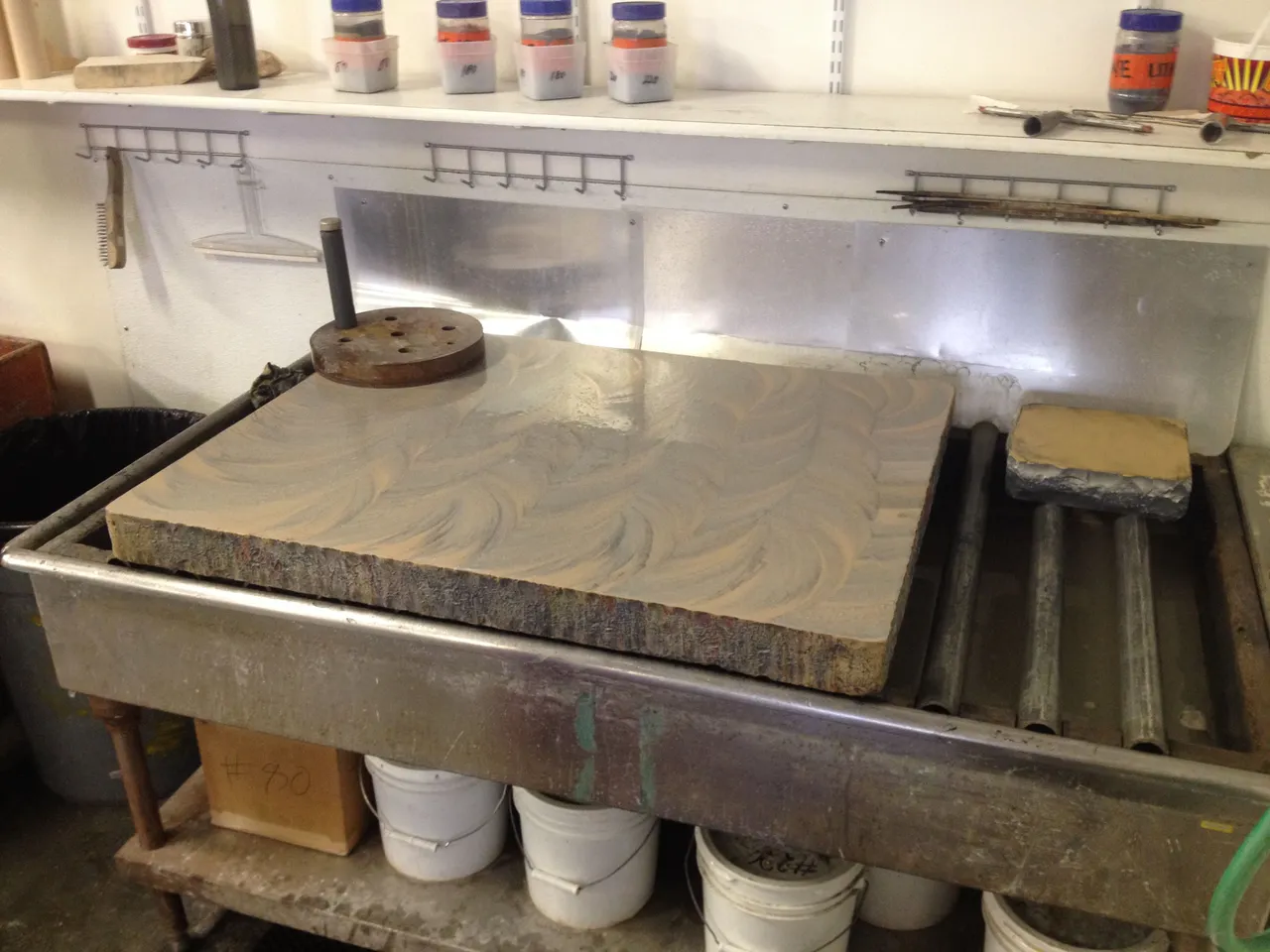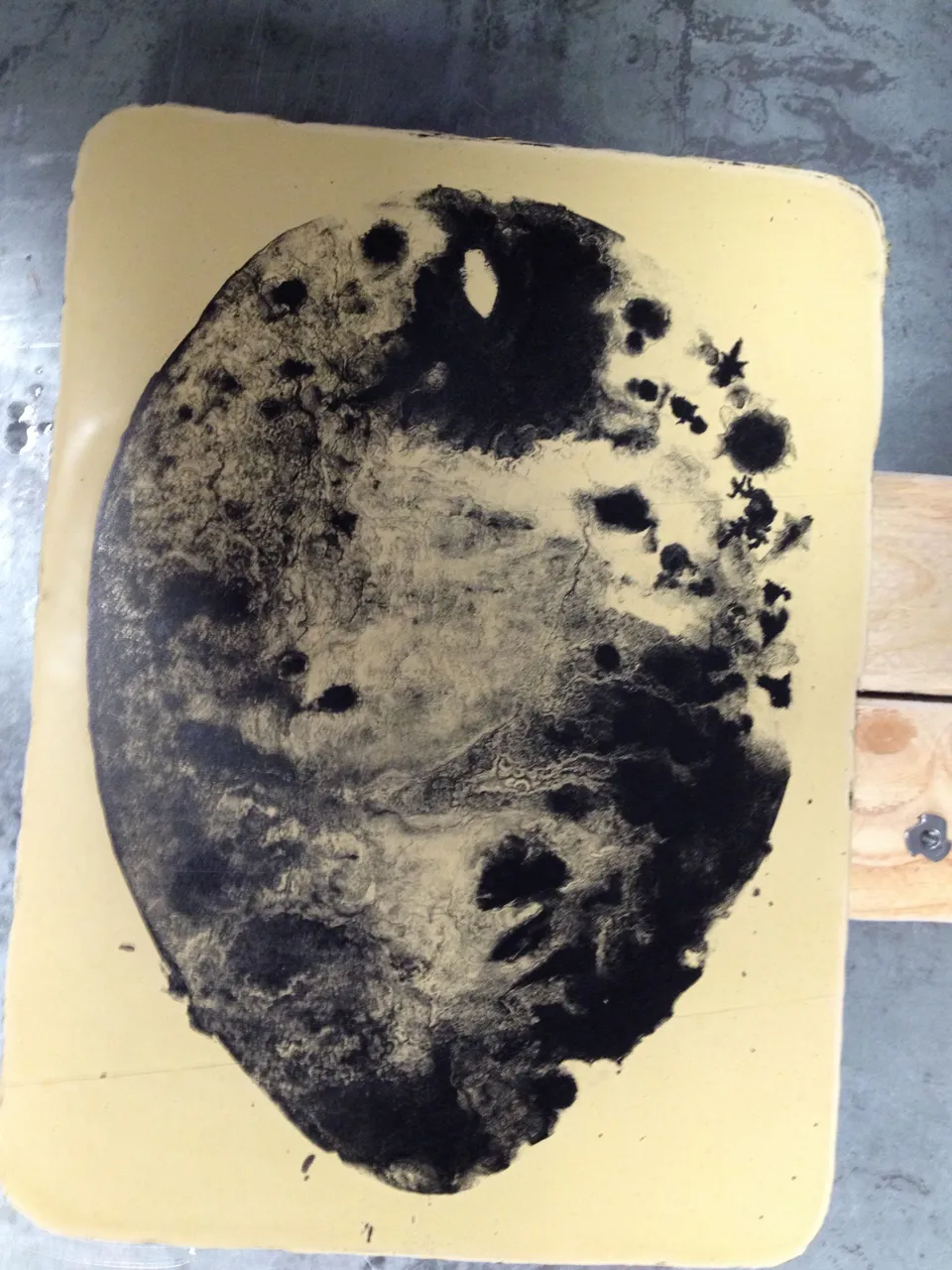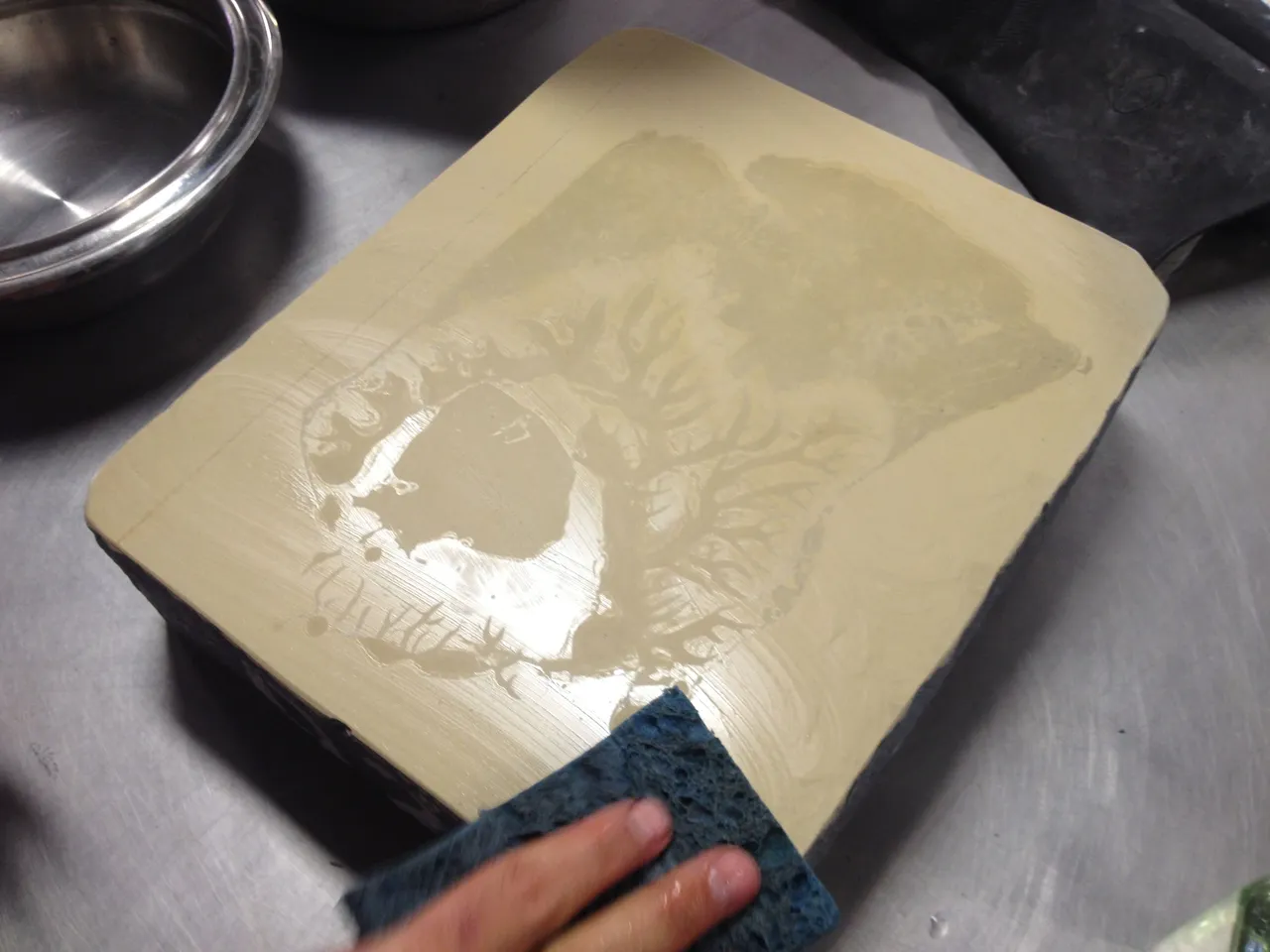Hey steemians,
i wanted to share a lithograph today, mostly because i am missing making prints. i havent really spent time in a print shop since i graduated from university.

i have been obsessed by the form of eggs. they represent something of a beginning and an end to me, as well as a number of analogies, like structural strength but an extreme weakness in a single point, much like the human psyche i have found. this comes from a general interest in psychological facades we put forward in order to defend ourselves from the world. something i think we all do, and i most surely do.
anyway, here is a tidbit on litho, from wikipedia, followed by some process shots of this image, and etching a different stone!
Lithography on limestone[edit]
Lithography stone and mirror image print of a map of Munich
Lithography works because of the mutual repulsion of oil and water. The image is drawn on the surface of the print plate with a fat or oil-based medium (hydrophobic) such as a wax crayon, which may be pigmented to make the drawing visible. A wide range of oil-based media is available, but the durability of the image on the stone depends on the lipid content of the material being used, and its ability to withstand water and acid. After the drawing of the image, an aqueous solution of gum arabic, weakly acidified with nitric acid HNO
3 is applied to the stone. The function of this solution is to create a hydrophilic layer of calcium nitrate salt, Ca(NO
2, and gum arabic on all non-image surfaces. The gum solution penetrates into the pores of the stone, completely surrounding the original image with a hydrophilic layer that will not accept the printing ink. Using lithographic turpentine, the printer then removes any excess of the greasy drawing material, but a hydrophobic molecular film of it remains tightly bonded to the surface of the stone, rejecting the gum arabic and water, but ready to accept the oily ink.[8]
[9] When printing, the stone is kept wet with water. Naturally the water is attracted to the layer of gum and salt created by the acid wash. Printing ink based on drying oils such as linseed oil and varnish loaded with pigment is then rolled over the surface. The water repels the greasy ink but the hydrophobic areas left by the original drawing material accept it. When the hydrophobic image is loaded with ink, the stone and paper are run through a press that applies even pressure over the surface, transferring the ink to the paper and off the stone.
Senefelder had experimented during the early 19th century with multicolor lithography; in his 1819 book, he predicted that the process would eventually be perfected and used to reproduce paintings.[2] Multi-color printing was introduced by a new process developed by Godefroy Engelmann (France) in 1837 known as chromolithography.[2] A separate stone was used for each color, and a print went through the press separately for each stone. The main challenge was to keep the images aligned (in register). This method lent itself to images consisting of large areas of flat color, and resulted in the characteristic poster designs of this period.
"Lithography, or printing from soft stone, largely took the place of engraving in the production of English commercial maps after about 1852. It was a quick, cheap process and had been used to print British army maps during the Peninsula War. Most of the commercial maps of the second half of the 19th century were lithographed and unattractive, though accurate enough."[10]
https://en.wikipedia.org/wiki/Lithography
there are many forms of making prints in a lithographic form, it can be done in your kitchen with aluminum foil, most modern printers use ball-grained aluminum, which will provide similar results to a stone. however i have found that you have the most control in the original method, working directly on limestone. so here is some printmaking porn, from my school studio.


this is graining the stone, removing the previous image, making the stone level, and getting it smooth, using carborundum, a levigator, and a polishing stone. this process can take weeks to get right, and if done wrong you will have scratches in your image, a ghost of the previous image, or worst of all, a broken stone. (these stones have become pretty rare, and you develop a friendship working on them for so many hours, so it is heartbreaking to see one split).

here is this print on the stone, right before i started proofing the image.

this is a test stone, but it shows what the stone looks like after it has been etched with nitric acid, and before you have rolled ink on it. to this day i find it to be one of the most beautiful things in the world.
i hope you enjoyed this little foray into the process of Lithography, it is an unbelievably complicated form of art which takes five lifetimes to master.
warmest regards,
shae